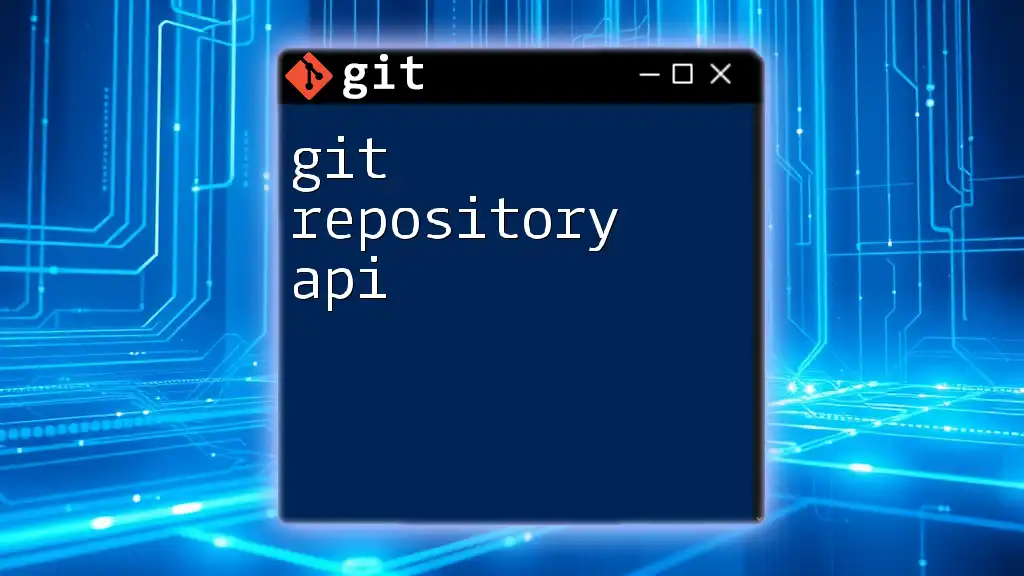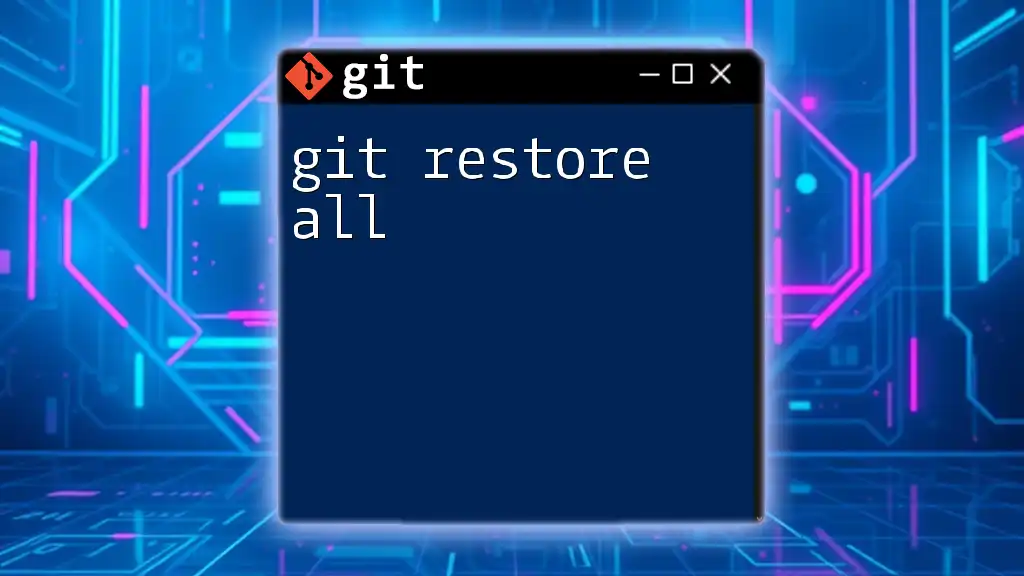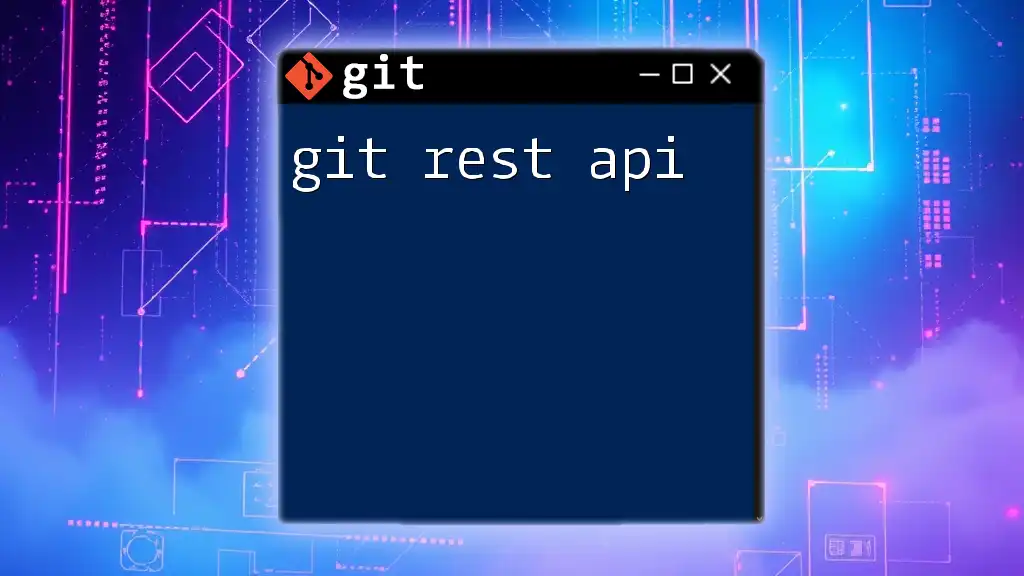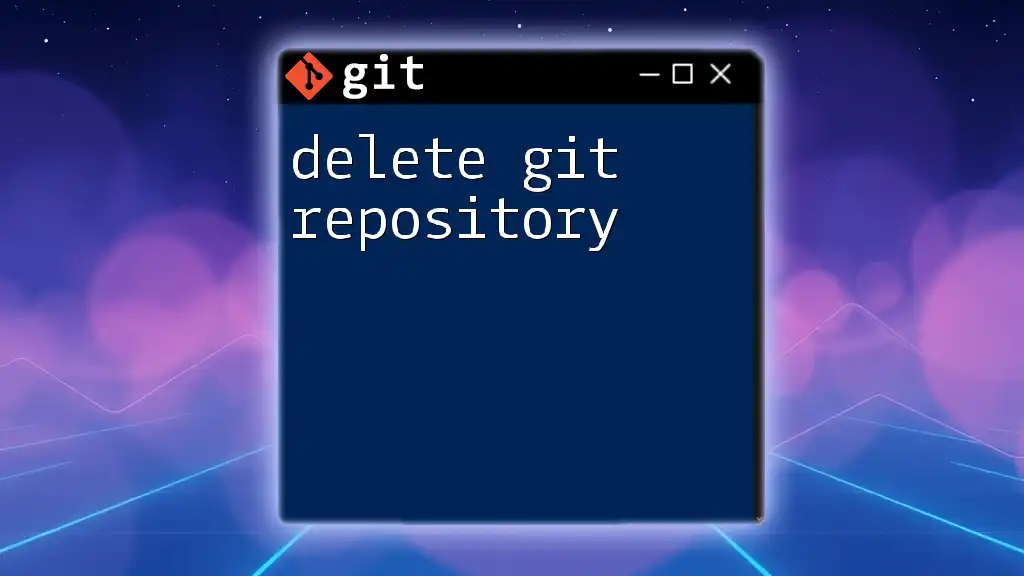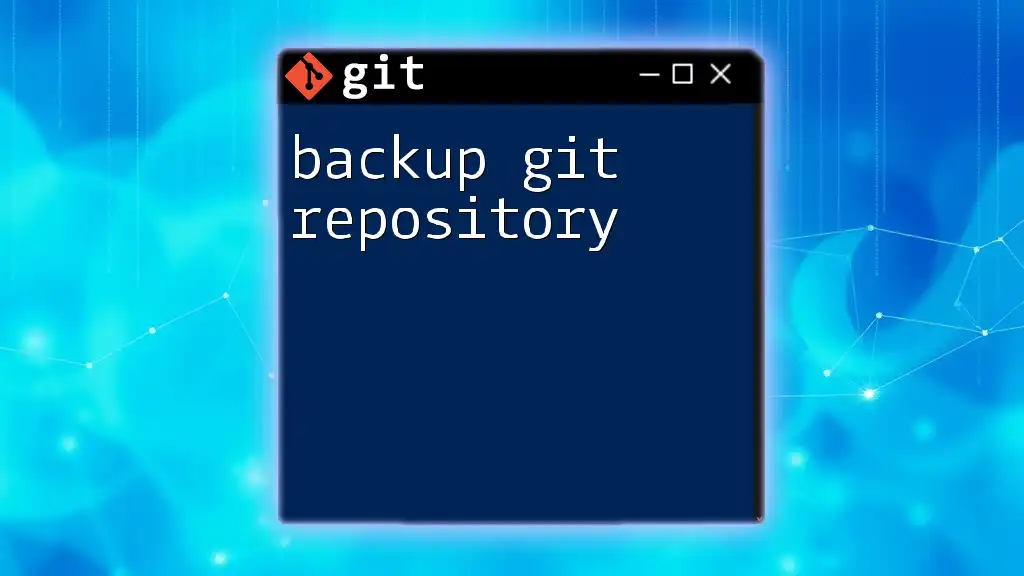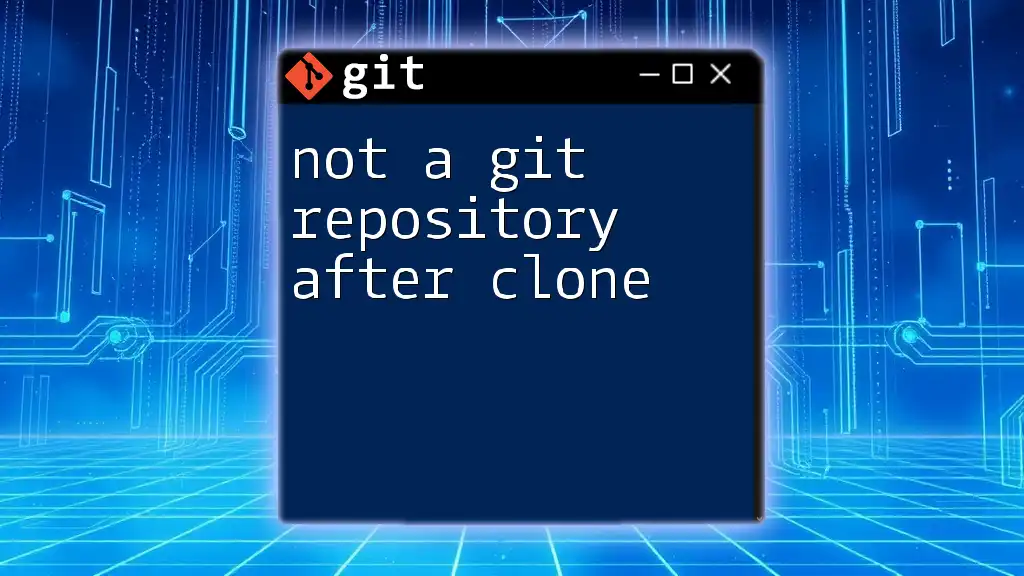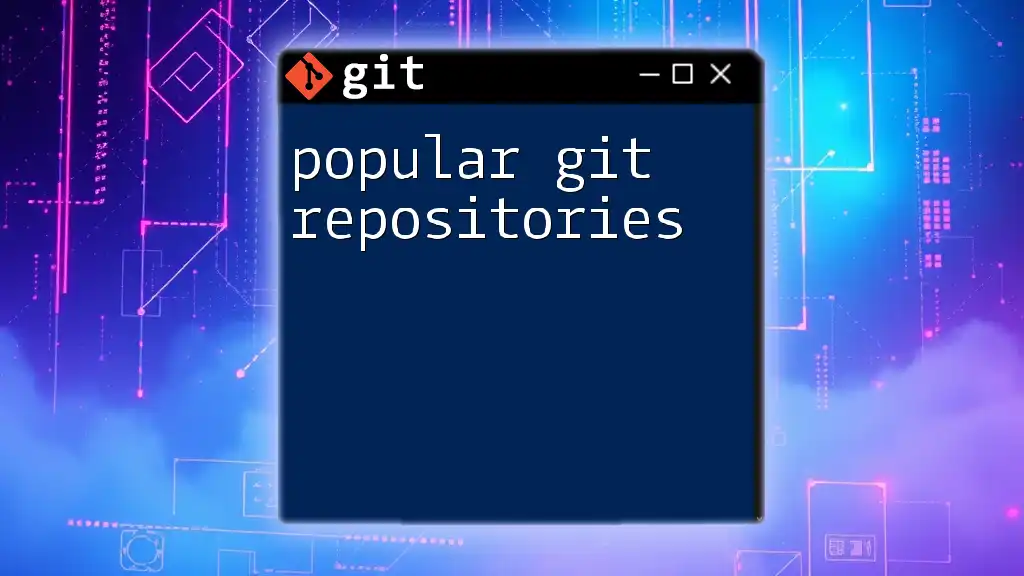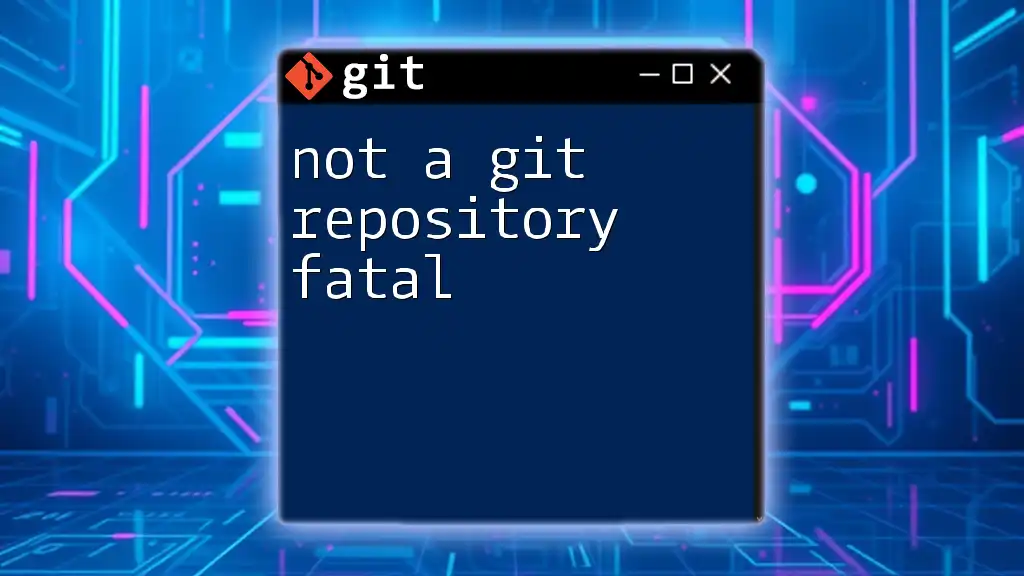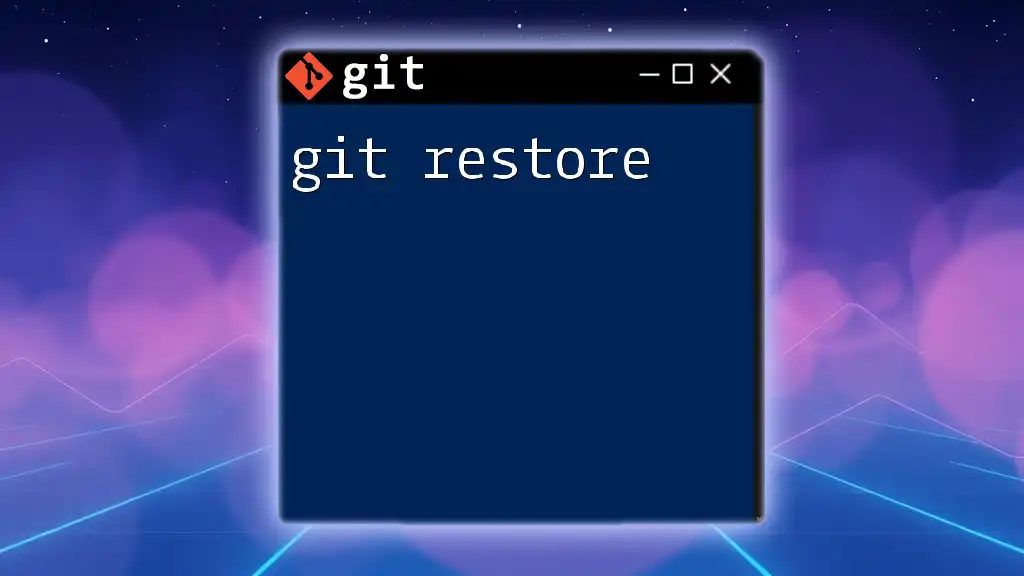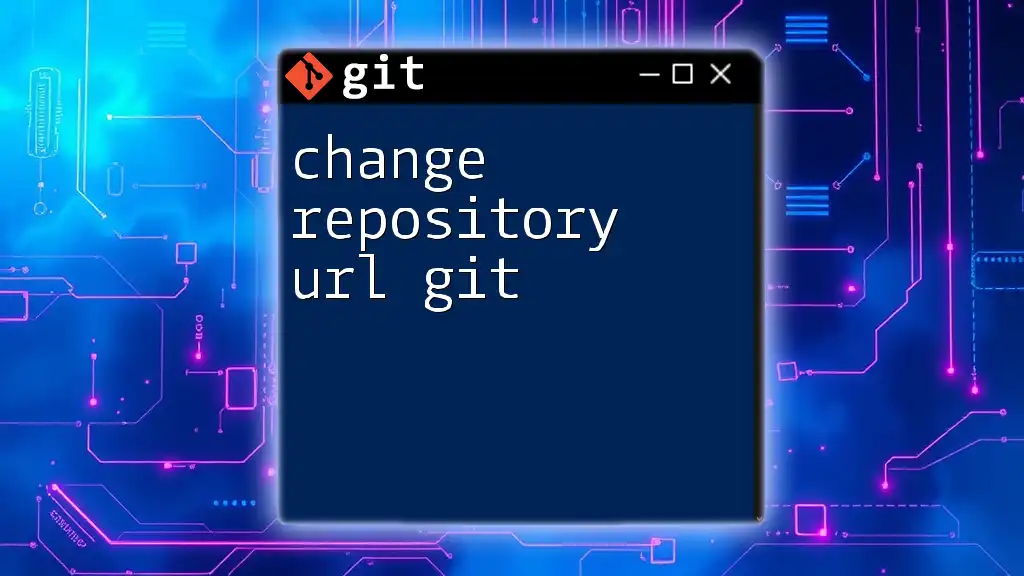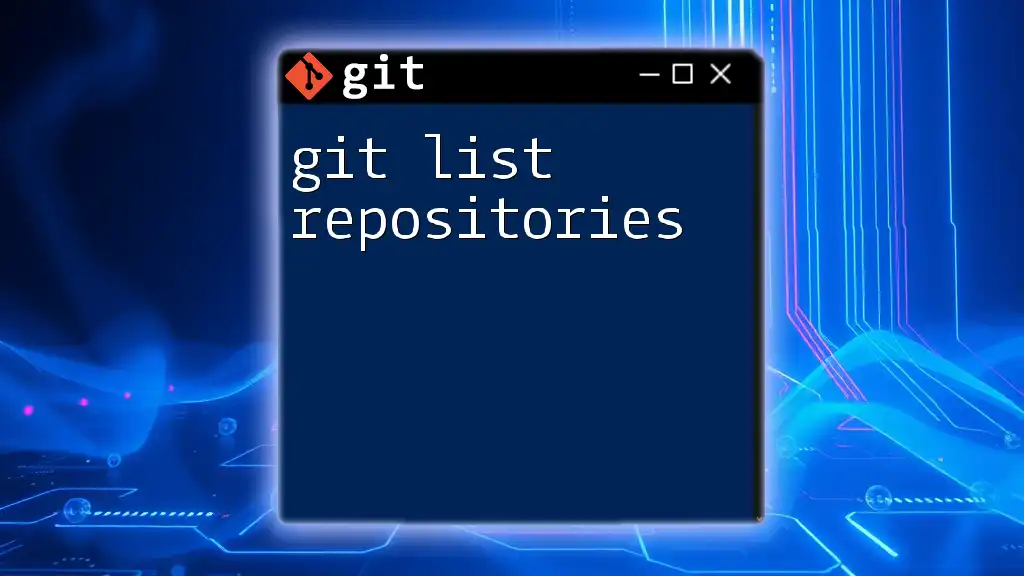A Git repository API allows developers to interact programmatically with Git repositories, enabling operations like cloning, committing, and pushing changes through HTTP requests or other interface methods.
Here's a basic example of using the Git API to clone a repository:
git clone https://github.com/username/repository.git
What is a Git Repository?
A Git repository is essentially a storage space for your project. It can be stored on a remote server or locally on your machine. A repository contains all of the project files and the history of changes made to those files. Understanding the structure and functionality of both local and remote repositories is crucial. A local repository resides on your computer, allowing you to work offline, while a remote repository resides on a server, enabling collaboration with others.
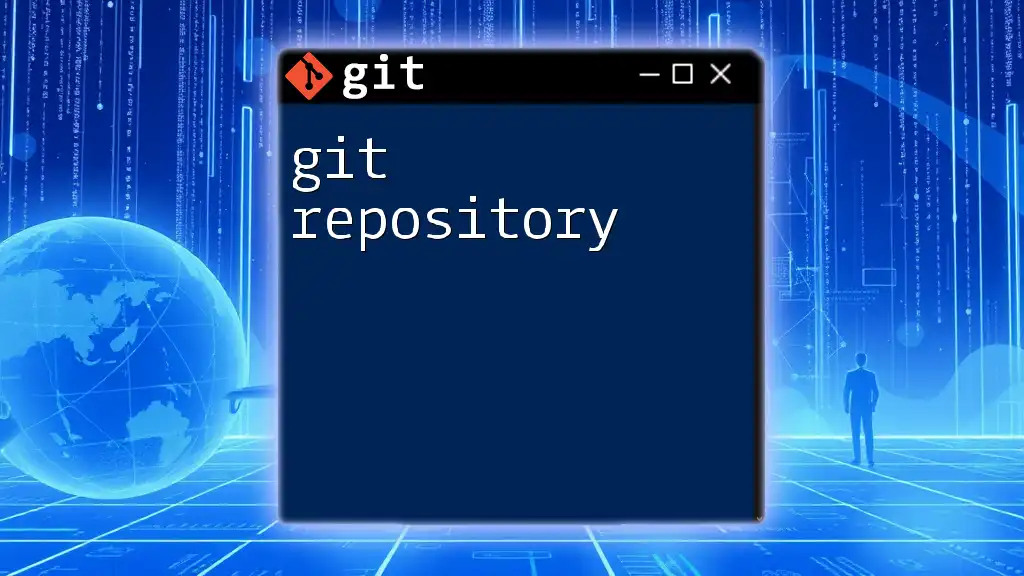
Overview of Git Repository API
The Git Repository API is a powerful interface that allows developers to interact with repositories programmatically. This API provides various functionalities, including accessing, managing, and manipulating repositories effortlessly. The ease of automating Git operations through this API is particularly beneficial for development teams utilizing continuous integration and deployment (CI/CD) pipelines.
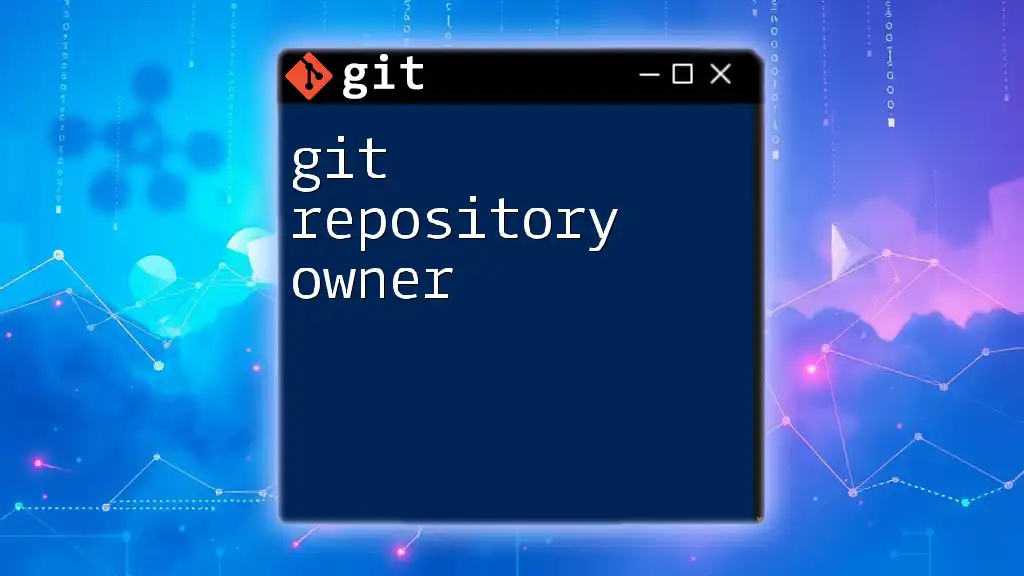
Common Git Repository API Endpoints
Authentication
To begin using the Git Repository API, you must authenticate your requests. Authentication can be achieved using various methods, such as API tokens or OAuth.
For example, to authenticate using a personal access token, you can use the following cURL command:
curl -H "Authorization: token YOUR_PERSONAL_ACCESS_TOKEN" https://api.github.com/user/repos
Make sure to replace `YOUR_PERSONAL_ACCESS_TOKEN` with a valid token. Proper authentication is essential to ensure secure interactions with your repositories.
Repositories
The core functionalities of the Git Repository API revolve around repository management. Here are some common endpoints:
Creating a Repository
Creating a new repository can be done with a simple POST request. Here's an example using cURL:
curl -X POST -H "Authorization: token YOUR_TOKEN" -d '{"name":"REPO_NAME"}' https://api.github.com/user/repos
This command will create a new repository with the specified name. Be sure to replace `YOUR_TOKEN` with your authentication token and `REPO_NAME` with the desired repository name.
Listing Repositories
You can retrieve a list of repositories you have access to by executing the following command:
curl -H "Authorization: token YOUR_TOKEN" https://api.github.com/user/repos
This will return a detailed JSON response containing information about each repository.
Getting Repository Information
To fetch specific information about a repository, use the command below:
curl -H "Authorization: token YOUR_TOKEN" https://api.github.com/repos/OWNER/REPO_NAME
Replace `OWNER` with the username and `REPO_NAME` with the repository's name to receive comprehensive details, including commit history and branch information.
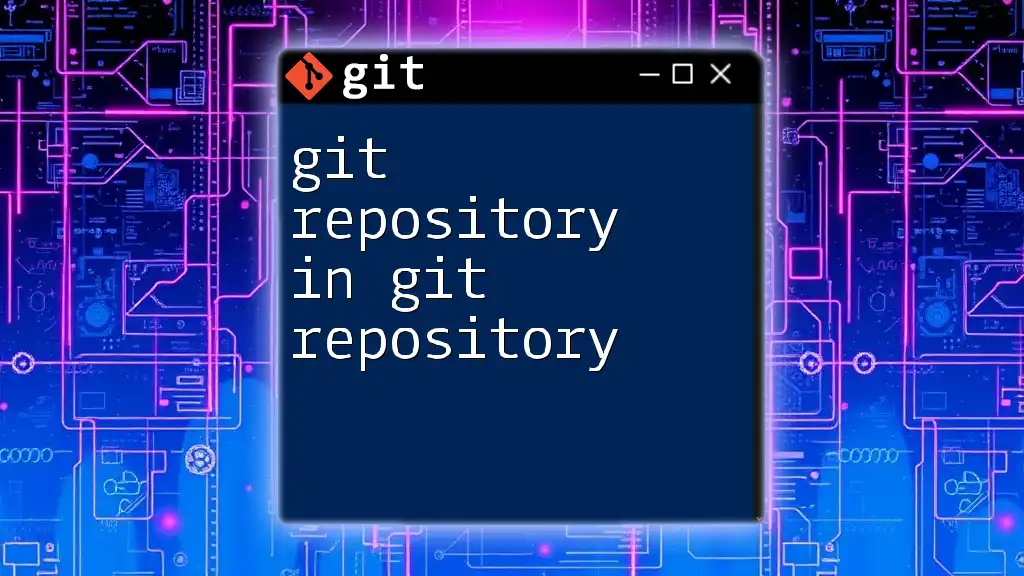
Working with Branches
Branches are a vital aspect of Git, allowing developers to work on features or fixes in isolation. The Git API offers endpoints to manage branches efficiently.
Creating a New Branch
To create a new branch, you need to reference the SHA of the base branch. This command exemplifies how to create a new branch via the API:
curl -X POST -H "Authorization: token YOUR_TOKEN" -d '{"ref": "refs/heads/NEW_BRANCH_NAME", "sha": "SHA_OF_BASE_BRANCH"}' https://api.github.com/repos/OWNER/REPO_NAME/git/refs
Change `NEW_BRANCH_NAME` to your desired branch name and replace `SHA_OF_BASE_BRANCH` with the SHA of the branch upon which you want to base the new branch.
Listing Branches
You can retrieve a list of all branches in a repository with the following command:
curl -H "Authorization: token YOUR_TOKEN" https://api.github.com/repos/OWNER/REPO_NAME/branches
This command will return an array of branches along with their latest commit information.
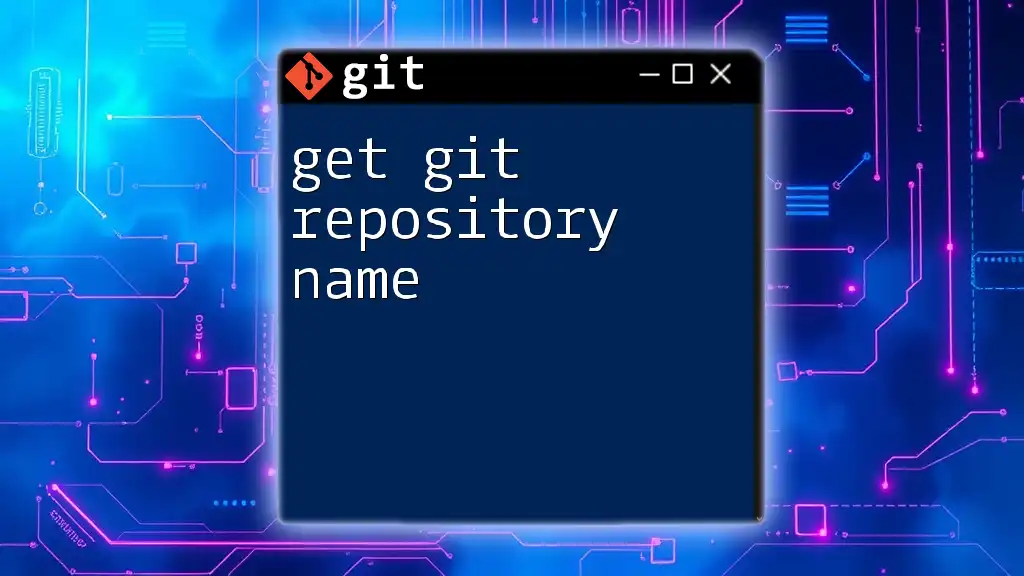
Managing Commits through the API
Commits record the history of changes made to files in your repository. Using the Git Repository API, you can create and manage commits programmatically.
Creating a Commit
Creating a commit involves specifying the commit message, the tree SHA (representing the content), and the parent commit SHA. Here's how to create a commit using the API:
curl -X POST -H "Authorization: token YOUR_TOKEN" -d '{"message": "Your commit message", "tree": "YOUR_TREE_SHA", "parents": ["PARENT_COMMIT_SHA"]}' https://api.github.com/repos/OWNER/REPO_NAME/git/commits
Make sure to accurately replace each placeholder with real identifiers. This will permanently record your changes in the repository's history.
Listing Commits
To view a list of commits in a repository, you can issue the following API call:
curl -H "Authorization: token YOUR_TOKEN" https://api.github.com/repos/OWNER/REPO_NAME/commits
This will yield a chronological list of commits, including their associated metadata.

Handling Pull Requests
Pull requests facilitate code review and merging changes from one branch to another. They are crucial for team collaboration. Using the Git Repository API, you can manage pull requests effortlessly.
Creating a Pull Request
To create a pull request, use the following command:
curl -X POST -H "Authorization: token YOUR_TOKEN" -d '{"title": "My Pull Request", "head": "NEW_BRANCH", "base": "main"}' https://api.github.com/repos/OWNER/REPO_NAME/pulls
Replace `NEW_BRANCH` with the name of the branch containing your changes and `main` with the branch you want to merge into.

Best Practices when Using Git Repository API
Security and Authentication
Securing access tokens is paramount. Avoid hardcoding tokens in your scripts. Consider using environment variables or secret management tools to store sensitive data.
Rate Limiting
Be aware that GitHub’s API has rate limits on the number of requests you can make. You can check your current rate limit status using:
curl -H "Authorization: token YOUR_TOKEN" https://api.github.com/rate_limit
Knowing the rate limit helps avoid service disruptions while using the API.
Error Handling
Common errors you may encounter while using the API include:
- 404 Not Found: The requested resource does not exist.
- 403 Forbidden: You do not have permission to access the requested resource.
- 401 Unauthorized: Authentication failed.
Handling these errors gracefully in your application is crucial to maintaining a robust integration.

Conclusion
The Git Repository API is an indispensable tool for developers looking to automate and enhance their workflow. Understanding its capabilities allows you to manage repositories efficiently, streamline team collaboration, and improve your development process. With this guide, you're well-equipped to dive into the API and start utilizing its features effectively.

Additional Resources
To deepen your understanding of the Git Repository API, consider checking the official Git documentation and exploring additional tools available for seamless integration. Doing so can significantly enhance your productivity and efficiency in managing your repositories.

